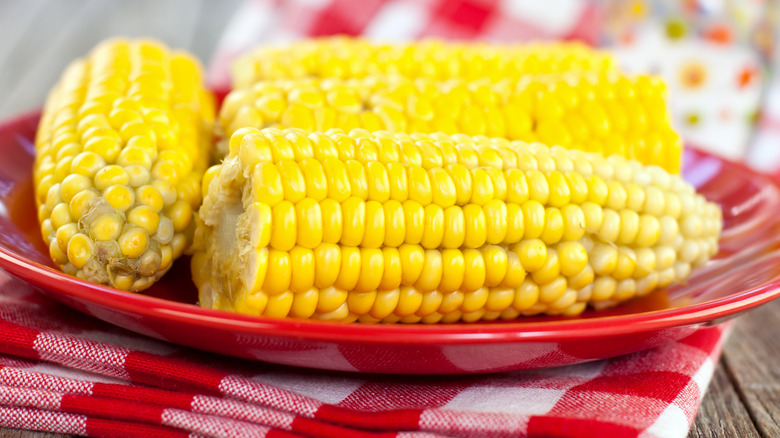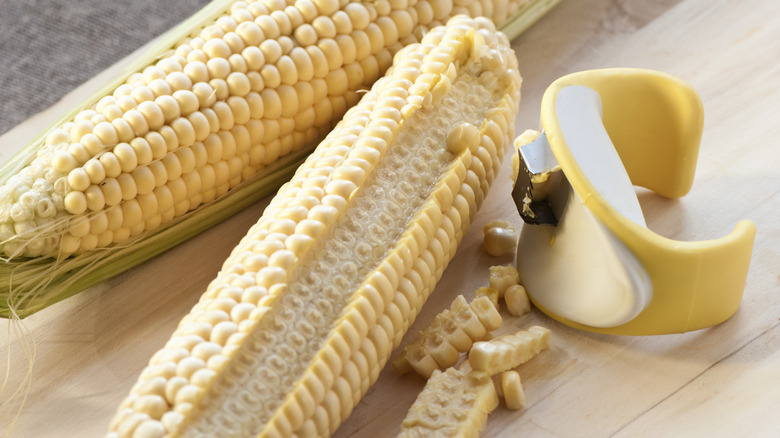Why Boiling Corn With The Husk On Is A Game Changer
No matter how hard you try, shucking raw corn always ends up making a mess. The annoying corn silk goes flying everywhere but inside the trash can, and, despite your meticulous efforts, you somehow still end up with strands in your teeth. It doesn't have to be like this — a game-changing approach to shucking corn makes the whole prep process easy.
Instead of sitting down with a paper bag loaded with cobs and going to work, heat up a large pot of water and boil the corn whole, husks and all. Since corn is known to taste better after boiling in salted water, you can add some salt, just in case it's able to permeate through the husk. You might even want to try boiling corn in milk, too. Leave the cobs on the stove for about eight to 10 minutes, before removing them from the pot and letting them cool enough to handle. The lengthy cooking time may sound like overkill, but the husks slow down the process.
Finally, cut off the end of each cob and wiggle it a little to help the corn slide out of the husk, then grab it and pull it out. The silk will stay behind, leaving you with clean, cooked kernels that are tender and ready to eat. This trick is similar to using a microwave to shuck corn or roasting the unhusked cobs in the oven. A little heat encourages the husk and silk to slip right off.
Easy ways to cut corn kernels off the cob
Cutting corn kernels off the cob for salads, salsas, and cornbread can still be a pain. Instead of hacking away willy-nilly, borrow chef Ina Garten's no-bowl method and slice off rows of corn over a cloth napkin. This makes the process neater, as you don't have to worry about missing the bowl while stray kernels fly where they may.
You can also take an old-school approach and use a Bundt pan to catch your kernels. Stick the top of the cob into the center hole to steady it, get a good grip, and cut the kernels off so they land neatly in the pan. Some cooks even saw off the edges of the hole to make it sharper, then push an entire cob through it, so that the metal edge strips the kernels off the core.
You could also consider buying a corn stripper gadget. There are many types of these tools; some function almost like a vegetable peeler, and others like a mandoline. There are even coring devices similar to apple corers (or the aforementioned Bundt pan trick). You could also use the simplest approach: laying the cobs on their sides and slicing off the kernels. If you choose this technique, stand the cobs up vertically first and slice one section of the kernels off in a downward motion. This creates a stable, flat surface. Then, just lay the cob cut side down and get to slicing.


